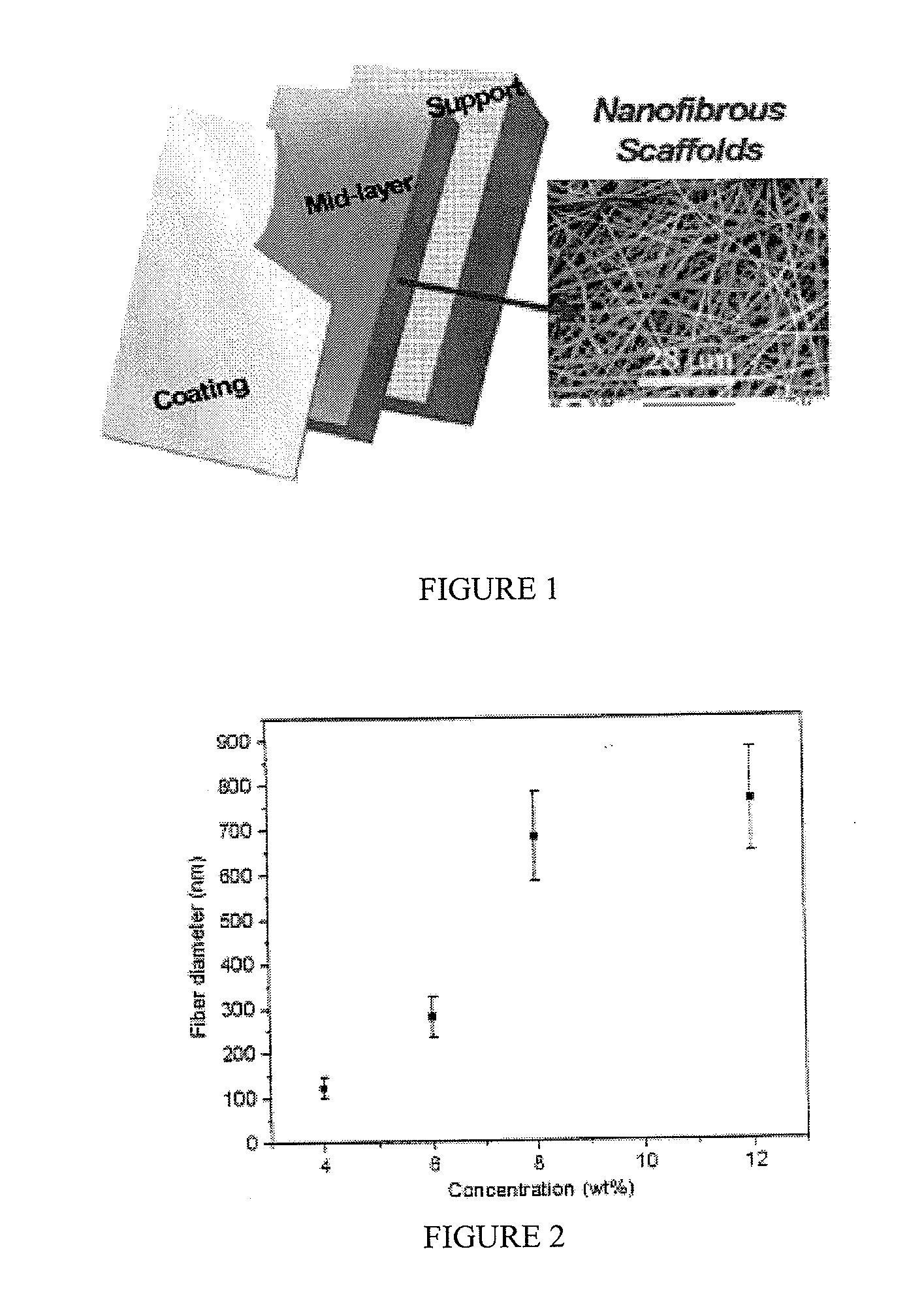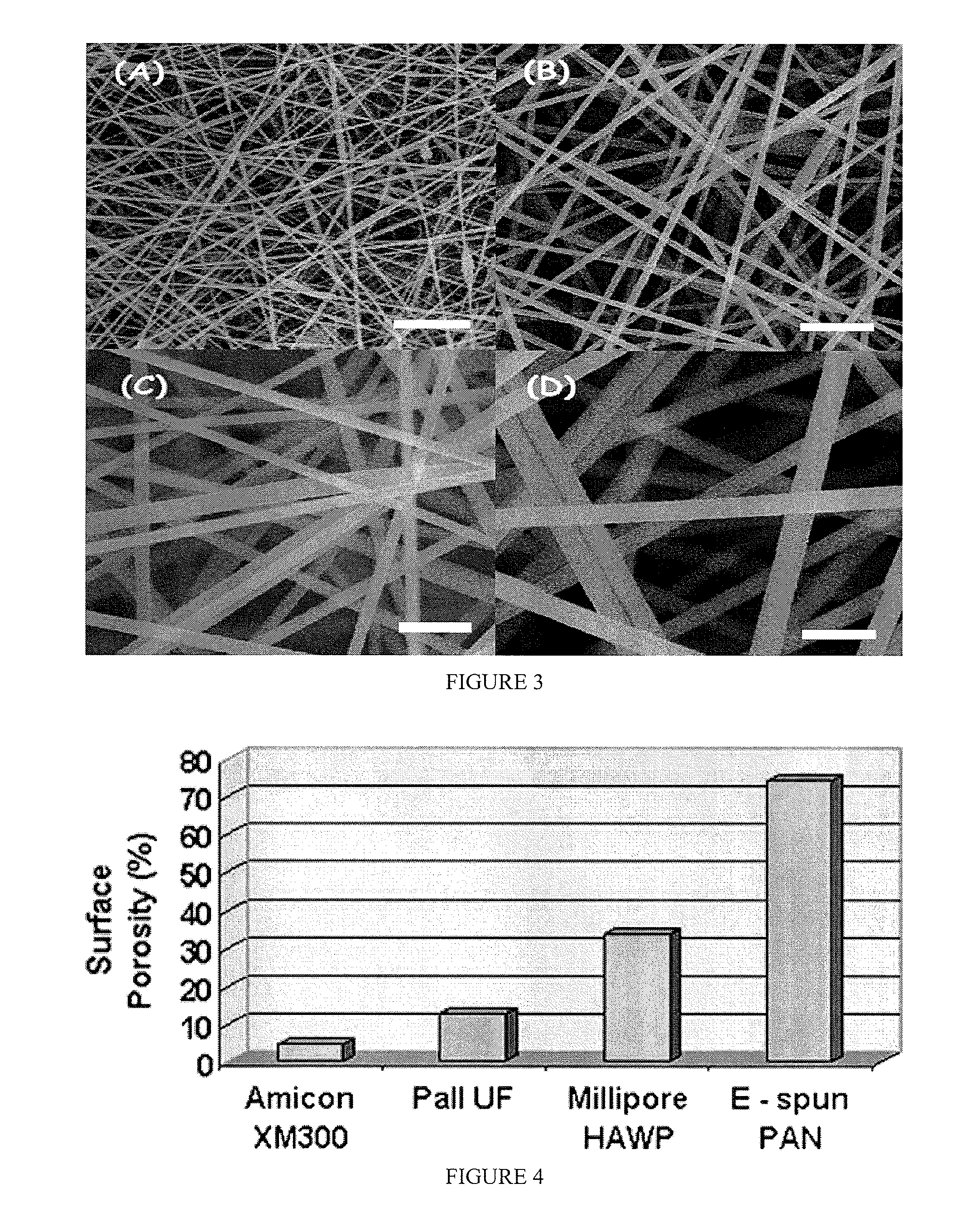Articles Comprising a Fibrous Support
a technology of fibrous support and support plate, which is applied in the direction of prosthesis, woodworking apparatus, medical preparations, etc., can solve the problems of low flux of membranes, decreased membrane flux rate during use, and reduced effect over tim
- Summary
- Abstract
- Description
- Claims
- Application Information
AI Technical Summary
Benefits of technology
Problems solved by technology
Method used
Image
Examples
example 1
Top Layer Prepared by Chitosan Solution Casting
Materials and Preparation
[0107]Polyacrylonitrile (PAN) with a weight-average molecular weight (Mw) of about 1.5×105 g / mol and chitosan with a viscosity-based molecular weight (Mv) ranging between 1.9×105 and 3.1×105 g / mol were purchased from the Aldrich Chemicals. Dimethylformamide (DMF, Aldrich) and acetic acid (glacial, Fischer) were used as solvents for PAN and chitosan, respectively, without further purification. The poly(ethylene terephathalate) non-woven substrate (PET microfilter FO2413 with an average fiber diameter of about 10 mm) for membrane support was kindly provided by Freudenberg Nonwovens (Hopkinsville, Ky.).
[0108]PAN was dissolved in DMF at 50° C. and the solution was stirred for about one day, or until the solution became homogenous. Polymer solutions of several different concentrations were prepared, ranging from 4 to 12 wt %. Chitosan was purified before use by the following procedure. The chitosan sample (˜1 g) was ...
example 3
Top Layer Prepared by PVA Solution Casting
[0143]PAN electrospun fiber diameters can be controlled by varying different parameters, such as solution concentration, electric field strength, pump speed, and so on. In this example, only the concentration was changed (from 6 wt % to 12 wt %) in order to vary the fiber sizes. Fiber sizes were changed from 153 nm to 1277 nm, depending on solution concentrations (FIG. 22). The support porosity remained relatively constant (with changes of less than ˜3%) while the fiber size changed by ˜88% (FIG. 23). It was found to be desirable to minimize the fiber roughness and maintain good mechanical properties in the electrospun mid-layer in order to support a thin and flawless top-coating layer on the membrane surface. From the stress-strain curves (FIG. 24) of PAN electrospun membranes, PAN 8% showed the highest modulus and strength values, which are most appropriate for our study and were used.
[0144]Based on the PAN 8 electrospun membrane, a PVA co...
PUM
| Property | Measurement | Unit |
|---|---|---|
| Fraction | aaaaa | aaaaa |
| Fraction | aaaaa | aaaaa |
| Time | aaaaa | aaaaa |
Abstract
Description
Claims
Application Information
 Login to View More
Login to View More - R&D
- Intellectual Property
- Life Sciences
- Materials
- Tech Scout
- Unparalleled Data Quality
- Higher Quality Content
- 60% Fewer Hallucinations
Browse by: Latest US Patents, China's latest patents, Technical Efficacy Thesaurus, Application Domain, Technology Topic, Popular Technical Reports.
© 2025 PatSnap. All rights reserved.Legal|Privacy policy|Modern Slavery Act Transparency Statement|Sitemap|About US| Contact US: help@patsnap.com



